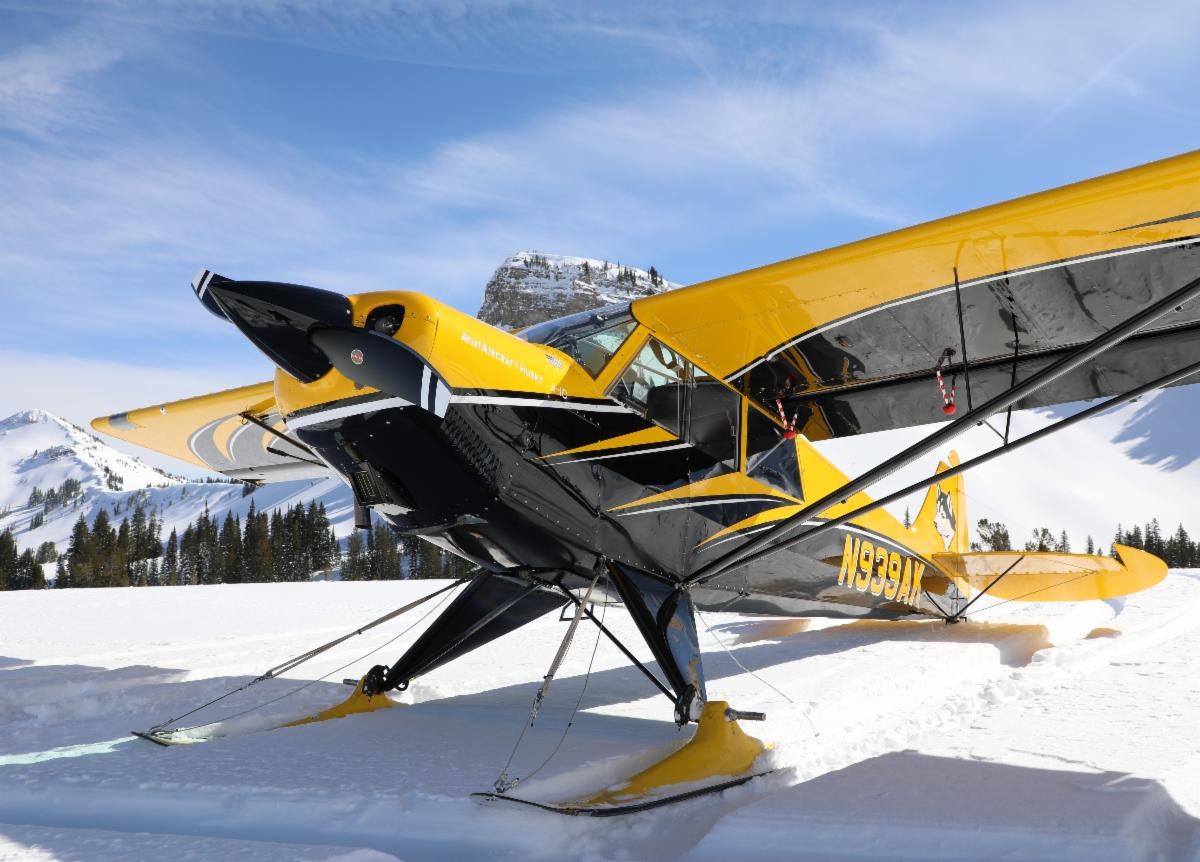
Winter flying can open up a world of adventure for pilots willing to brave the cold and embrace new challenges. Imagine flying into a pristine snow-covered destination for a weekend of ice fishing, cross-country skiing, snowshoeing, and winter camping. Outfitting your aircraft with skis can make it possible!
Most ski-equipped airplanes are tailwheel aircraft, but there are options for tricycle-gear types. A good place to start is by researching the type certificate for your aircraft and finding out if any STC approvals are available for ski installations on your specific airplane. In general, many propeller-driven backcountry aircraft are ideal for ski flying, such as the Cessna Skywagon, Aviat Husky, Maule, and American Champion Scout, to name a few.
Different types of skis are designed for different snow surfaces. Straight skis are the most straightforward option, replacing wheels for ski landing gear made for deep snow. There are also wheel penetration skis, which have a cutout for the standard landing gear tire to fit through and provide the ability to operate on either snow-covered surfaces or pavement. Retractable wheel skis tend to offer the most flexibility, using a hydraulic or electro-hydraulic system to extend the skis for snow landings or raise them for runway landings.
One thing to consider when transitioning to ski flying is any potential changes to the ground clearance of your aircraft propeller if your skis sink into the snow. While snow is certainly more forgiving than gravel, hitting the snow with your propeller blade tips can reduce your thrust on takeoff and potentially damage your prop on landings. Talk to a propeller expert about the right prop dimensions for your ski plane. You may also consider switching to a backcountry propeller optimized for takeoff and climb performance to help you get up and out of deep snow quickly.
When it comes to ski flying, think like a skier! Understanding different snow conditions and how your aircraft performs in them will help you determine when and where it’s safe to takeoff and land. For example, soft, powdery snow can be deceptively deep. “Crusted” snow can give way to soft snow underneath under the surface. Heavy, wet, slushy snow should be avoided altogether. Packed snow that’s been compressed is usually best for new ski plane pilots.
The ability to judge the ice quality from the air is also an essential skill if you plan to land on frozen lakes. In the winter, dark blue ice is more solid than white ice. The opposite is true in the spring, when white ice is harder and gray ice is melting.
Whenever you’re flying in the backcountry — and especially when flying in the winter — you’ll never regret packing a survival kit. In addition to standard emergency gear like a satellite phone, sleeping bag, signaling devices, waterproof matches, flashlights, a knife, water, snacks, and a first aid kit, include a good shovel and emergency blankets. Bundle up with a coat and boots, and use an aircraft preheater. In the event you get stuck, you’ll be prepared.
As with backcountry flying, it’s a good idea to use the buddy system. Flying with others is fun, and will help ensure you’re not left out in the cold in an emergency situation.
While the FAA does not require a special rating or endorsement to fly a plane with skis, it’s wise to complete some training with a qualified CFI to get used to flying your aircraft on skis. With the right skills, equipment, and preparation, you’ll be ready for safe and spectacular ski flying experiences.
Have you ever been ski flying? Share your stories and photos with us on Facebook, Twitter, or Instagram.